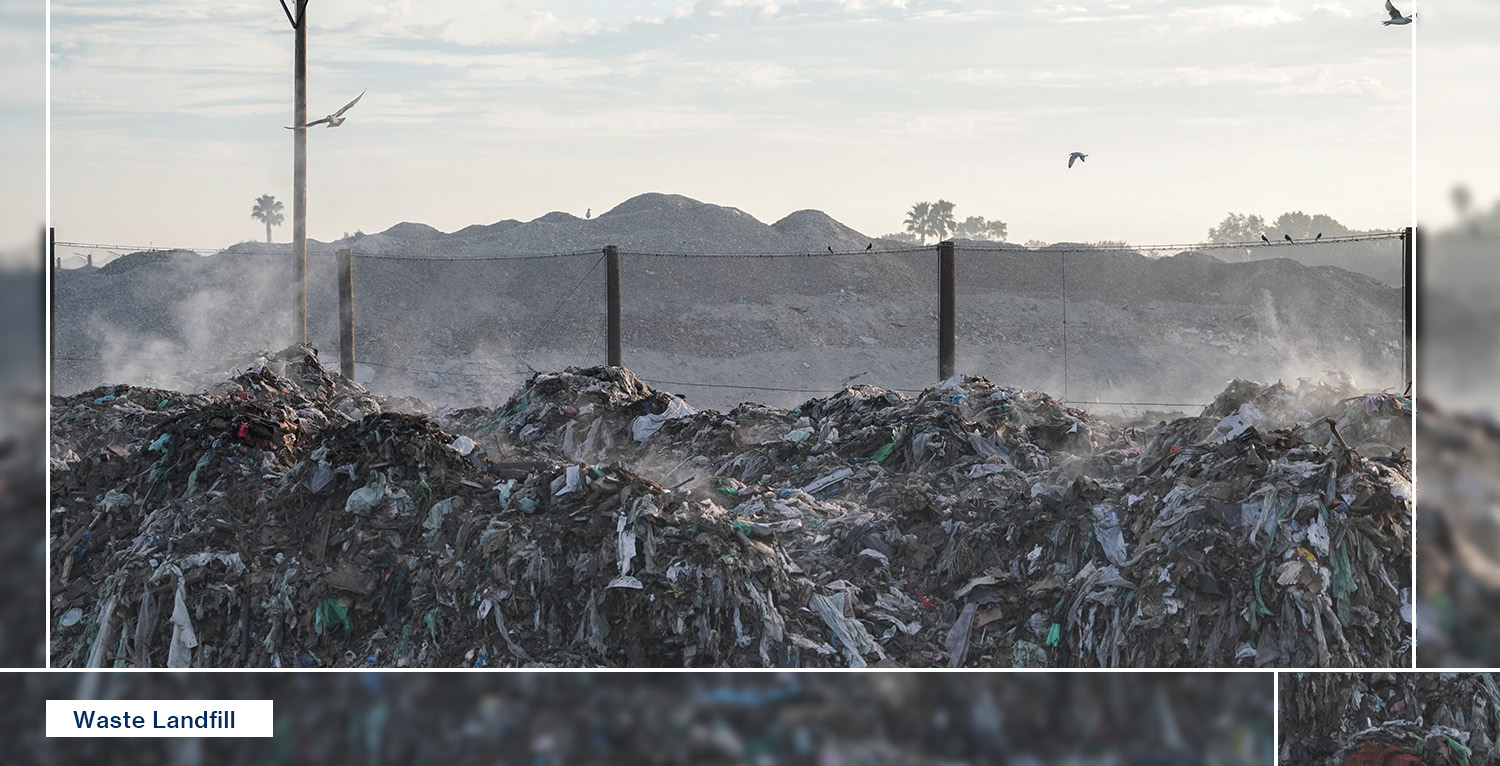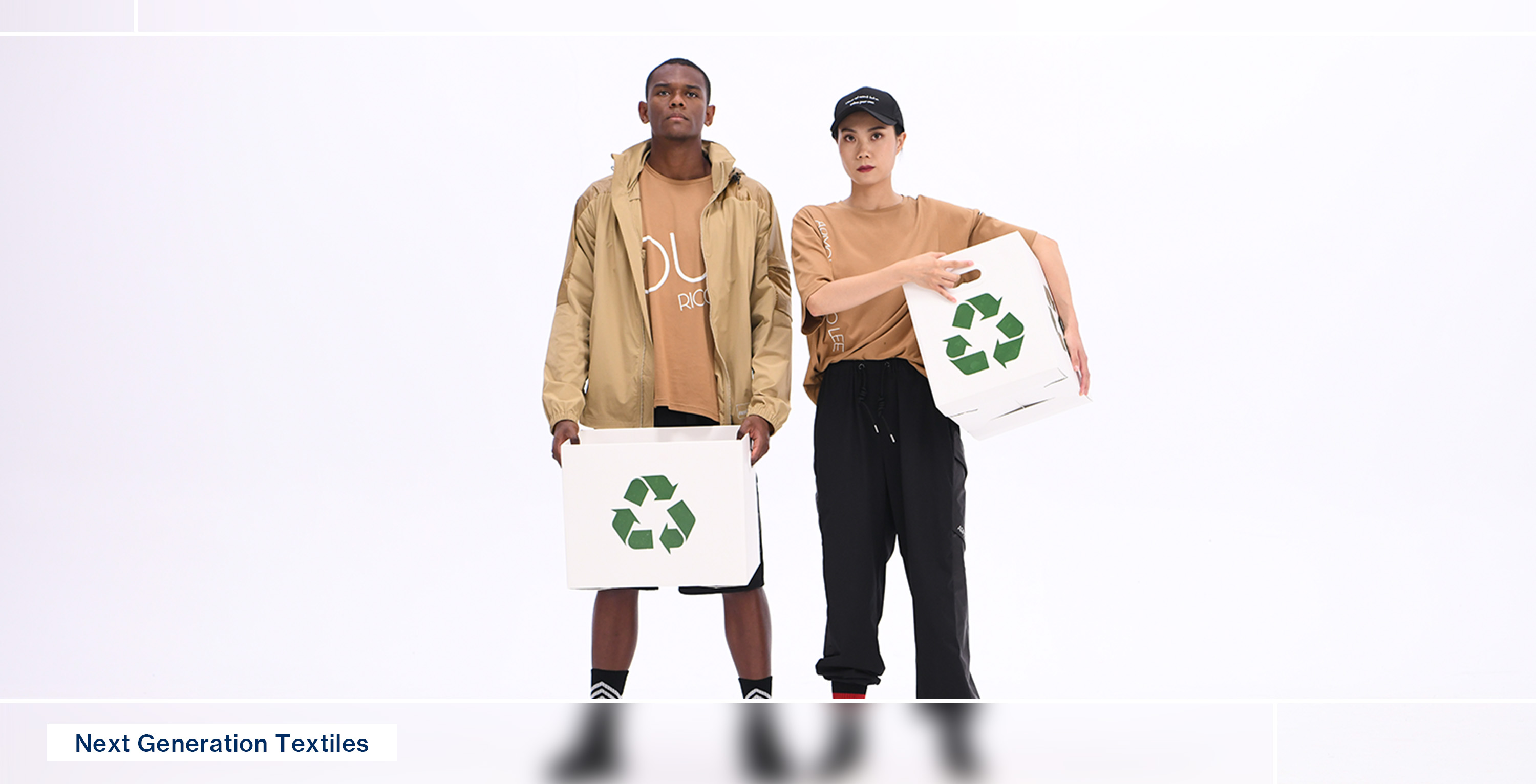Why Sustainable Fashion Must Be a Lasting Trend
What if, instead of wearing polyester-based shirts, pants and dresses, we opted for clothing made from materials that can be more easily recycled?
We would contribute to a sizable reduction in atmospheric carbon, limit the amount of waste sent to landfill, and reduce pollution.
With clothing being produced at a faster rate than ever, the fashion industry accounts for almost 10% of global carbon emissions—more than international flights and shipping combined, according to the United Nations Environment Program.1
It is responsible for huge amounts of waste – the equivalent of around one garbage truck every second – and is one of the main contributors of plastic microfibers entering our oceans thanks to synthetic materials like polyester, which are not biodegradable.2


One of the main reasons polyester has become so ubiquitous as a production material for clothing – particularly in mass-market fast fashion – is that it is cheap and versatile.

For the fashion industry to follow a more sustainable path, it must be able to leverage cost-effective and eco-friendly solutions across its entire value chain – growers, processors, goods manufacturers, distributors, and retailers.
According to RGE, the world’s biggest producer of viscose rayon, an alternative biodegradable fiber made from natural materials, environmental stewardship starts at home.
“In 2020, we announced our Sustainability 2030 Vision4 under which our China-based viscose fiber business committed to using textile waste to produce viscose products with 50% recycled content by 2023, and 100% by 2030, while our Indonesia-based business committed to sourcing 20% of its fiber from recycled textiles," explained Bey Soo Khiang, Vice Chairman of RGE.


RGE, which is headquartered in Singapore, has also committed $200 million over the next decade to the development of next-generation fiber technology.5 It hopes this will catalyze the development of ground-breaking solutions in both alternative cellulosic raw materials and cleaner technology.
The RGE-NTU Sustainable Textile Research Center (SusTex)6 is a five-year collaboration between RGE and Singapore’s Nanyang Technological University to boost innovation in textile recycling technology, which is another key part of the effort to make garment production more sustainable environmentally and economically.
As our increasingly urbanized world produces more and more waste, current recycling technology lacks the capacity to handle certain categories, such as textile waste.
“One of the challenges is the separation of blended fibers, often colored, which consist of different materials and dyes in various compositions, and they are woven or knit together at microscopic scale,” explained Professor Hu Xiao from NTU’s School of Materials Science and Engineering.
This process normally requires bleaching by using chemicals, which can be potentially harmful for people and the environment.
For this reason, SusTex is exploring cleaner, more energy-efficient recycling options, which include automated waste-sorting, blended fiber separation and upcycling, dye removal using less chemicals while formulating greener dye substitutes, and the development of a new generation of durable and eco-friendly textiles that are easier to recycle.

“It can also make textile materials stronger and more durable, so garments can be used longer in the hope of reversing the current appetite for fast fashion. It is very clear that extensive, concerted actions are urgently needed, and we hope that SusTex serves as an example and catalyst for better collaborative efforts.”

Another trend driving the shift toward a more environmentally aware fashion industry: the rise of the eco-conscious consumer.
According to one global study, 50% of those surveyed said they had become more eco-friendly in the past six months.7 Another survey that targeted fashion-conscious consumers specifically, revealed that two in three respondents would willingly pay more for an eco-friendly product.8
Charting a practical course to sustainability at scale in the fashion industry to meet this demand is a huge challenge, but it also presents a significant opportunity.

For RGE, it’s a strategic business growth area. For instance, its China-based business, Sateri, has been producing certain viscose products using up to 20% of its raw materials from textile waste. Its Indonesia-based business, Asia Pacific Rayon (APR), recently collaborated with several brands to produce clothing made from sustainable viscose fibers for Indonesia’s burgeoning Muslim fashion market.
At the 2022 Muslim Fashion Festival in Jakarta, models presented a collection of viscose denim that added a modern spin on traditional Indonesian fabric (“wastra”), produced by independent female designers from small communities.
“As designers, the availability of sustainable raw materials originally from Indonesia really helps us to create environmentally friendly fashion,” said Ali Charisma, National Chairman of the Indonesia Fashion Chamber.

Implementing lasting change in the fashion industry will require coordinated action across the various segments that make up its value chain – materials, manufacturers, and brands – in addition to governments and related agencies.
For example, RGE recently formed a three-year strategic partnership with the Singapore Fashion Council with support from Enterprise Singapore. The aim is to support the adoption of sustainable industry and consumer practices in fashion within Singapore and the region.
“The Singapore Fashion Council recognizes that transformative change is needed for sustainability,” said Ho Semun, CEO, Singapore Fashion Council.
“But the foundation must be laid first, and this is not the job of a single organization. It requires public-private partnership as well as consumers themselves being part of the change. Initiatives to transform the industry should take into consideration the whole ecosystem.”

Singapore’s Economic Development Board (EDB), which helped enable the RGE-NTU collaboration, says the Southeast Asian hub is becoming increasingly attractive to global fashion brands as the ideal ecosystem for nurturing their own green ambitions.
“Singapore is valued by these companies for its proximity to source and end markets, the diverse culture and accessibility to top talent, and the availability of like-minded partners and suppliers like RGE who can support their ambitions in the continuous development of sustainable fashion as a key growth strategy,” said Fong Pin Fen, Vice President and Head, Consumer Accounts Group, EDB Singapore.
The stakes are high for both the fashion industry and the environment. This must be a permanent makeover and not a passing fad.
